 |
Home Info History Transportation Restaurants Top-10 Events Nightlife Walks Safety Photos
Wine  |
With so many attractions, both historical and contemporary, Madrid is one of the world's most exciting cities to explore. These are the top 10 attractions and most visited sites that you don't want to miss. The very best Madrid has to offer!
1. The Prado Museum.

The Prado Museum is the most prestigious museum in Madrid and probably the largest gallery of Classical paintings in the world. It was visited by more than 2,700,000 people in 2009. The construction of the building was ordered by Carlos III in 1785 to architect Juan de Villanueva. In 1819, during the reign of Fernando VII, more than 300 works from the Spanish monarchy were assembled here. Today the museum houses more than 8,000 paintings, but because of lack of space available less than 2,000 are on public display. The collection at El Prado includes the works of El Greco, Velázquez, Goya, Zurbarán, Ribera, Murillo, El Bosco, and many others.
Read more about the Prado Museum here.
2. The Royal Palace.

The Royal Palace (Palacio Real) of Madrid occupies the site of the old 9th Century Muslim Alcázar (Fortress). Construction work of the present building began in 1738, and concluded 26 years later in 1764 during the reign of Carlos III. The building forms a massive quadrilateral made of white granite measuring 140 meters (459 feet) on the sides, and has some 2,800 rooms of which only about 50 are open to visitors. The Royal Palace was the official residence of the royal family until 1931, but today, it is only used for state occasions and special ceremonies such as to greet heads of state. The current royal family lives in the Palacio de la Zarzuela on the outskirts of the city. In 2005, the Royal Palace was visited by 900,000 people.
Read more about the Royal Palace here.
3. The Plaza Mayor.

The Plaza Mayor (Main Square) was built by Juan Gómez de Mora in 1619 during the reign of Felipe III, whose equestrian statue stands in the center of the square. It is enclosed by surrounding buildings with balconies and measures 120 x 90 meters (394 x 295 feet). During the course of its long history, the Plaza Mayor was used for festivals, bullfights, as a place for public executions, and other events. Today, it is a popular meeting point used for cultural events. Restaurants, bars, and stores can be found under the surrounding arcades, and in the spring and summer months terrazas (outdoor cafes) are set up over the big esplanade.
Read more about the Plaza Mayor here.
4. Puerta del Sol.
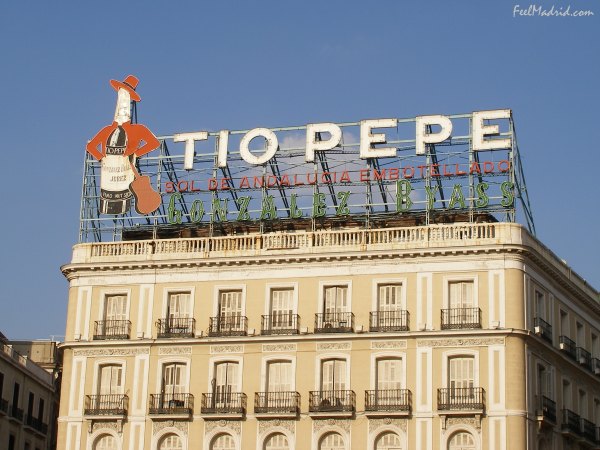
The Puerta del Sol (Sun Gate) is one of the most well-known and crowded places of Madrid. Here you can find some of the most distinguished symbols of the city such as the bronze statue of the bear and the strawberry tree, the Kilometer Zero marking on the ground from which all the main roads of Spain radiate, the equestrian statue of Carlos III, and the famous "Tio Pepe" sign.
Read more about the Puerta del Sol Here.
5. Retiro Park.
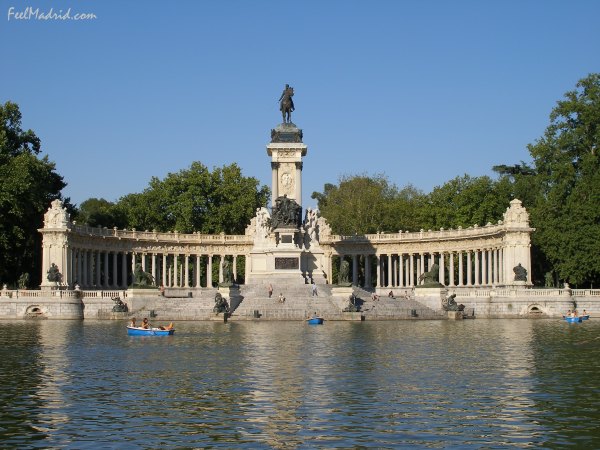
The Retiro Park (Parque del Retiro) is the largest green space within Madrid covering about 130 hectares. It is one of the favorite places of all Madrileños to spend the day with the family, children, have a walk, or just rest. Main features are the estanque (lake) where boats may be hired, and the huge monument to King Alfonso XII which was inaugurated in 1922. The park is full of fountains, colonnades and statues.
Read more about the Retiro Park here.
6. Palacio de Comunicaciones.
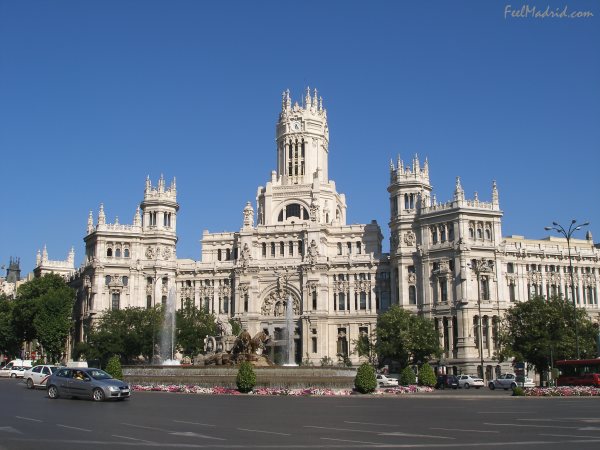
The Palacio de Comunicaciones (Communications Palace), built by architects Antonio Palacios and Joaquín Otamendi, serves as the headquarters of the main post office. Construction began in 1904 and the building was completed in 1917.
7. El Escorial.
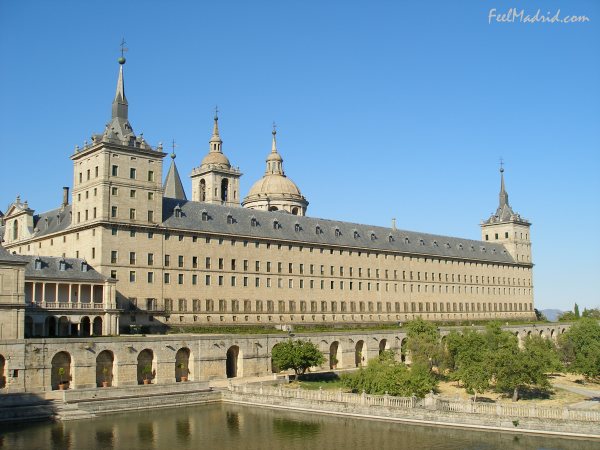
The Monastery of El Escorial, located some 30 miles northwest of Madrid in the foothills of the Sierra de Guadarrama, was built as a monument to commemorate the Spanish victory over the French in the battle of Saint Quentin on 10 August 1557 (feast day of St. Lawrence). Felipe II himself selected the site for the monastery, 1,028 meters (3,372 feet) above sea level, and personally oversaw the progress of the project. The monastery was initially designed by architect Juan Bautista de Toledo, but after his death in 1567, his assistant Juan de Herrera continued the work. Construction lasted 21 years from 1563 to 1584, and for many years after its completion, El Escorial Monastery was the largest building in the world.
Read more about the Monastery of El Escorial Here.
8. Santiago Bernabeu Stadium.

The Santiago Bernabéu Stadium, inaugurated in 1947, is the home of the Real Madrid football team which according to FIFA is the "best club in the history of football". The stadium is named after the former club president Santiago Bernabéu, and currently has a capacity of 80,400. It can be visited every day from 10:00 am to 19:00 pm except on December 25th and January 1st. Guided tours include a panoramic view of the stadium from the main stand, the presidential box, dressing room, players' tunnel, benches, the pitch, and the trophy room.
Read more about the Santiago Bernabeu Stadium Here.
9. Plaza de España.
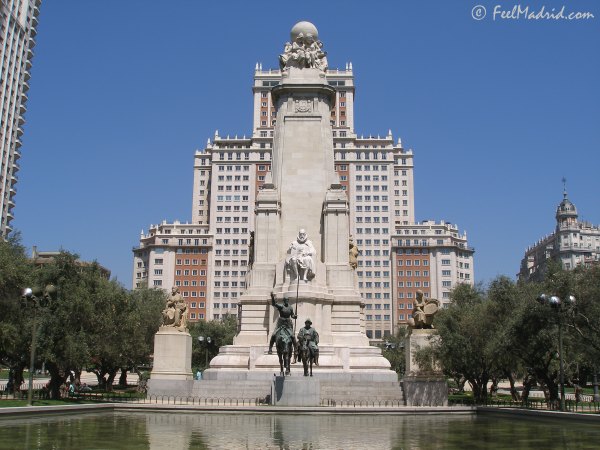
The Plaza de España (Spain's Square) is a large open space located on Gran Via's western end and dominated by Madrid's first skyscrapers, the Edificio España and the Torre de Madrid. In the middle of the square is the stone monument to Cervantes raised in 1927, and the statues of Don Quixote and Sancho Panza.
Read more about the Plaza de España Here.
10. Madrid Rio.
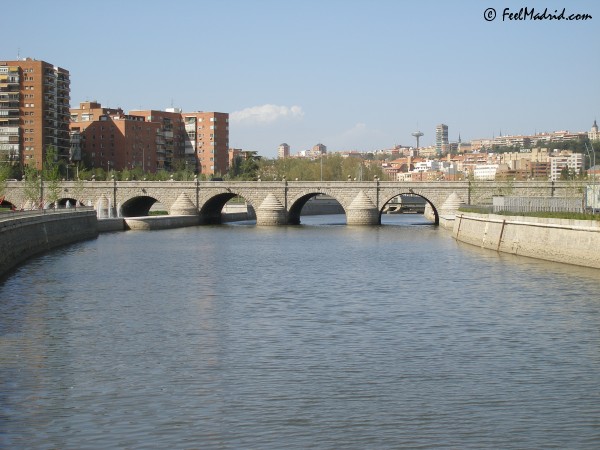
Along the banks of the Manzanares river.
| Home Info History Transportation Restaurants Top-10 Events Nightlife Walks Safety Photos Wine Quiz Contact |

